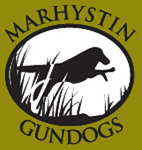BVA Hip & Elbow
Hip dysplasia (HD) is a common inherited orthopaedic problem of dogs and a wide number of other mammals. Abnormal development of the structures that make up the hip joint leads to subsequent joint deformity. ‘Dysplasia’ means abnormal growth. The developmental changes appear first and because they are related to growth, they are termed primary changes. Subsequently these changes may lead to excessive wear and tear. The secondary changes may be referred to as (osteo)arthritis (OA), (osteo)arthrosis or degenerative joint disease (DJD). Later one or both hip joints may become mechanically defective.
At this stage the joint(s) may be painful and cause lameness. In extreme cases the dog may find movement very difficult and may suffer considerably. It was in the light of this knowledge that the British Veterinary Association (BVA) and the Kennel Club (KC) developed a scheme some 40 years ago to assess the degree of hip deformity of dogs using radiography. To date radiographs (X-rays) from more than 250,000 dogs have been assessed providing a standardised reflection of the HD status of those dogs that have been examined. This information is primarily of use for breeders. Currently 126 breeds are surveyed by the scheme in the UK.
The current BVA/KC scoring scheme for elbow dysplasia (ED) was launched in 1998. Dysplasia means abnormal development, and the degree of elbow dysplasia present is indicated by a grade assigned to each elbow on a scale of 0 to 3 (0 being the best and 3 being the most severe). Only the highest grade of the two elbows is taken as the elbow grade for that dog. The minimum age for elbow grading is one year, and each dog is only ever graded once under the scheme. Advice to breeders is wherever possible to use only those dogs with grades of 0 or 1 for breeding.
Which breeds are screened under the Scheme?
Any breed may be screened under the scheme, but there are a number of breeds which have been shown to have a higher incidence of elbow dysplasia. These breeds include: Basset Hounds, Bernese Mountain Dogs, English Mastiffs, German Shepherd Dogs, Golden Retrievers, Great Danes, Irish Wolfhounds, Labrador Retrievers, Newfoundlands and Rottweilers.
How do I get my dog graded under the Scheme?
Owners should make an appointment with their vet who can take the required X-rays of the dog’s elbows. The vet then sends the X-rays to the British Veterinary Association where they are examined and “graded” by a panel of experts. Once the X-rays have been graded, the result is returned to the vet, who relates it to the owner, and a copy is sent to the Kennel Club for recording on the registration database and publication in the KC Breed Records Supplement. There is a time limit of 45 days and a set procedure for appealing against results under the Scheme.

